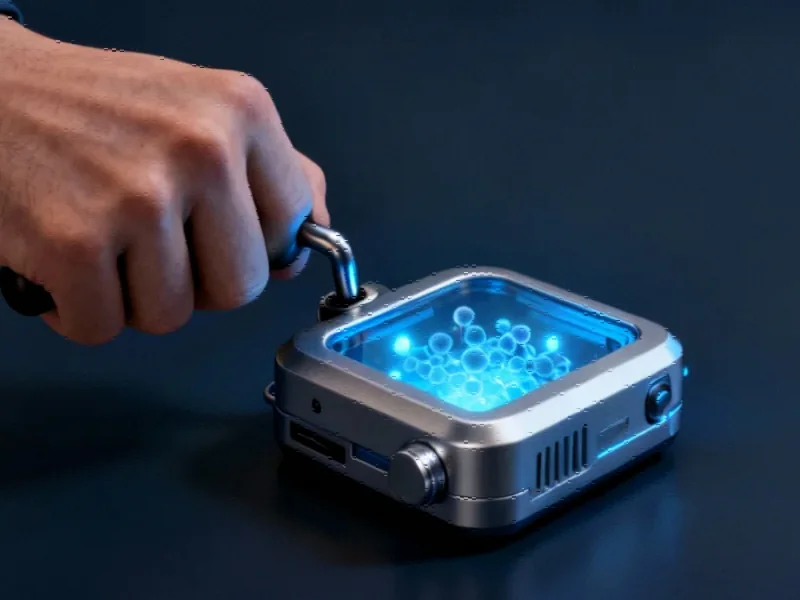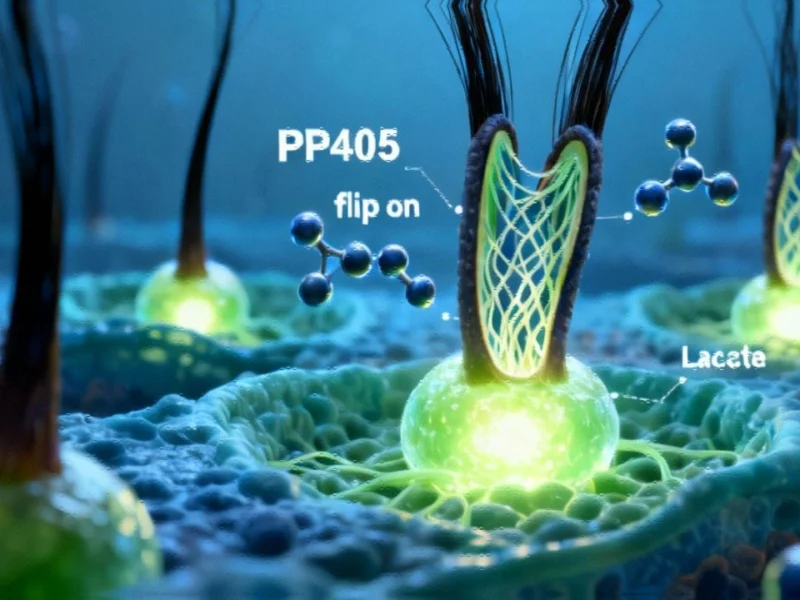Revolutionizing Water Treatment in Off-Grid Environments
Researchers have developed a groundbreaking hand-powered water purification system that uses specially engineered nanoparticles to eliminate dangerous pathogens in seconds. This innovation represents a significant advancement in decentralized water treatment technology, particularly valuable for disaster response and remote communities lacking reliable electricity.
The device, created by a team at the University of Electronic Science and Technology of China, addresses a critical gap in emergency and off-grid water purification. “Most point-of-use options either need electricity or strong sunlight, and they’re slow,” says lead researcher Xu Deng, highlighting the limitations of current solutions that this new technology overcomes.
Nanoparticle Activation Through Mechanical Energy
The system’s core innovation lies in its use of two types of nanoparticles that become activated through simple manual stirring. The device contains spherical silica nanoparticles coated with amine group chemicals, which become positively charged in water, alongside gold nanoparticles that develop a negative charge when water is stirred.
“Think of a hand-cranked jar with a small dose of engineered, sand-like powder,” Deng explains. “A few turns of the handle creates gentle shear in the water and that motion ‘wakes up’ our nanoparticles.” This mechanical activation eliminates the need for external power sources while achieving rapid disinfection.
Advanced Pathogen Destruction Mechanism
The water flow across the nanoparticle surfaces generates electrical charges that produce reactive oxygen species – powerful oxidizing chemicals that effectively destroy microbial pathogens. “Those reactive oxygen species punch holes in microbial membranes, so pathogens can’t survive or reproduce,” Deng notes.
This mechanism represents a novel approach to water disinfection, differing significantly from traditional methods that rely on chemicals, UV light, or filtration. The system’s effectiveness against multiple pathogen types makes it particularly valuable for comprehensive water safety. For those interested in related innovations in nanotechnology applications, this development shows how mechanical energy can be harnessed for advanced purification processes.
Proven Effectiveness Against Dangerous Pathogens
Laboratory testing demonstrated remarkable results against 16 highly transmissible pathogens that pose serious public health risks. The system achieved a 99.9999% reduction in E. coli with just 15 seconds of stirring in 50°C water, and the same reduction rate for Vibrio cholerae within one minute. Overall, it inactivated more than 95% of all tested microorganisms.
Chiara Neto at the University of Sydney praised the scientific approach, calling it “very clever, fantastic work” that demonstrates innovative application of nanoparticles for destroying pathogen cell membranes. These industry developments in material science continue to push the boundaries of what’s possible in practical applications.
Sustainable Operation and Economic Viability
The system offers significant advantages in sustainability and cost-effectiveness. “The same batch of particles is recovered after each cycle and reused,” Deng emphasizes. Additionally, once charged, the system provides long-lasting protection against re-contamination for many hours.
Despite using gold nanoparticles, the material costs remain manageable because the amount required is minimal. The primary expenses come from the silica powder and plastic housing, making the technology potentially accessible for widespread deployment. This approach aligns with recent technology trends focusing on sustainable, reusable systems in industrial applications.
Future Applications and Development
While currently in the proof-of-concept phase, the technology shows promise for various applications beyond emergency water provision. The researchers have not yet determined the total water volume the system can disinfect, but the reusability of nanoparticles suggests potential for extended operation.
The development represents a significant step forward in addressing global water safety challenges, particularly in scenarios where conventional treatment methods are impractical. As researchers continue to refine the technology, it may join other market trends in decentralized systems that empower communities with reliable, independent solutions to essential needs.
Broader Implications for Industrial Computing
This innovation demonstrates how mechanical systems integrated with advanced materials can create sophisticated solutions without requiring complex electronics or power infrastructure. The intersection of material science and practical engineering continues to yield breakthroughs that address critical global challenges while maintaining simplicity and reliability.
The technology’s success highlights the importance of continued research in nanoparticle applications and their potential to transform multiple industries, from water treatment to healthcare and beyond. As development progresses, this approach may inspire similar innovations across various sectors seeking efficient, power-independent solutions.
This article aggregates information from publicly available sources. All trademarks and copyrights belong to their respective owners.
Note: Featured image is for illustrative purposes only and does not represent any specific product, service, or entity mentioned in this article.



